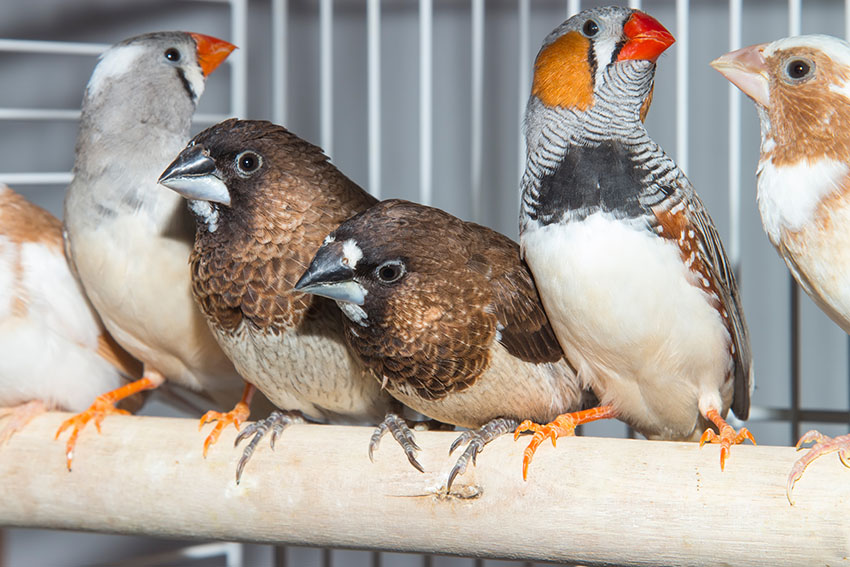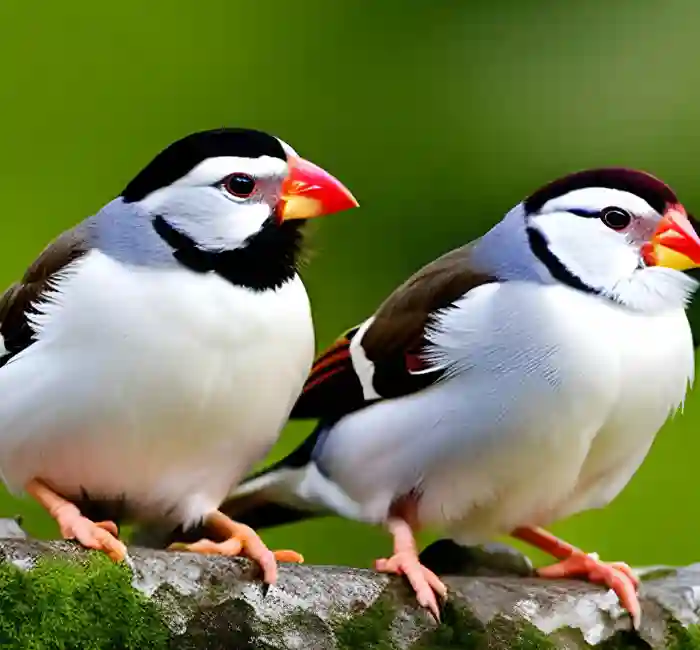Breeding and raising java sparrows requires a combination of proper housing, nutrition, and health management. This comprehensive guide covers all essential aspects of successfully breeding and raising java sparrows in captivity.
Java sparrows, also known as padda or ricebirds, are popular among bird enthusiasts due to their distinct appearance and pleasant singing voice. These small birds are native to southeast asia and are known for their social behavior and intelligence. Breeding and raising java sparrows can be a rewarding experience if done correctly.
However, it requires careful attention to housing, feeding, and health management. In this guide, we will cover all the essential aspects of successfully breeding and raising java sparrows in captivity. From creating the ideal housing environment to providing proper nutrition and health care, this guide will provide you with all the information you need to ensure the health and well-being of your breeding pairs and their offspring.

Credit: www.omlet.co.uk
Breeding Java Sparrows
Java sparrows are easy to breed, and they are very prolific birds. However, breeding birds requires attention and preparation, and it is important to ensure the breeding environment is suitable and that the birds are well-fed and healthy. In this section, we’ll take a look at the key points of breeding and raising java sparrows.
Selecting The Right Breeding Pairs
Breeding pairs need to be chosen carefully. You need to ensure that the pair you choose is healthy and that they are compatible.
To choose the right breeding pair, keep the following points in mind:
- Choose birds of the same age
- Choose birds that are in good health
- Select birds with different physical characteristics, for greater genetic diversity
- Males tend to be more aggressive, so choose a less dominant male
- Avoid inbreeding, as it can lead to genetic problems in future generations
Creating A Suitable Breeding Environment
Java sparrows require a suitable breeding environment for successful breeding. The breeding environment should be comfortable, safe, and secure. The following are some key factors to consider:
- Provide ample space for the birds to move around freely
- Provide nesting materials such as soft grass, fur, and feathers
- Ensure that the temperature remains around 26°c (79°f)
- Provide enough food and fresh water daily
- Provide a suitable nest box
- Clean the cage every day to prevent the build-up of bacteria and parasites
- Don’t overcrowd the breeding enclosure.
Nesting And Egg-Laying
When birds are comfortable in the cage, they will start to build their nests, lay their eggs, and incubate them. Here are some key points to consider:
- The female bird will choose the nest location
- The female lays 2-5 eggs every other day
- After the last egg has been laid, incubation begins
- The female will be responsible for incubating the eggs
Incubation And Hatching
Once the eggs have been laid, it takes about 12-14 days for the eggs to hatch. Here are some key points to consider:
- Keep the temperature and humidity stable
- The eggs should be turned every two hours to ensure even temperature
- Don’t disturb the eggs during incubation
- Once the eggs hatch, the nestlings will be featherless and need to be kept warm
Caring For And Feeding Baby Java Sparrows
Here are some crucial points to consider when caring for baby java sparrows:
- Feed baby birds every two hours using a mixture of egg and commercial baby bird food
- Provide plenty of water
- Keep the environment warm and dry
- Clean the cage often to prevent the build-up of bacteria and parasites
- Gradually introduce the birds to seed as they mature.
Avoiding Common Breeding Problems
Here are some of the most common problems to avoid when breeding java sparrows:
- Overcrowding
- Inadequate food or water
- Inbreeding
- Poor nesting materials
- Inadequate incubation conditions
By addressing these issues and following the steps laid out in this comprehensive guide, you can ensure successful breeding and healthy, happy java sparrows.
Raising Java Sparrows

Java sparrows make excellent pets, with their striking appearance, good nature, and ability to learn and mimic sounds. If you’re interested in raising java sparrows, the most important factor is to provide them with the ideal conditions for a long and healthy life.
Creating A Suitable Habitat For Adult Java Sparrows
Java sparrows need a habitat that allows them to move easily without any obstructions. Here are some important points to consider when creating a suitable habitat for your java sparrows:
- Choose a cage or aviary with ample space
- Provide comfortable perches for roosting and exercise
- Ensure proper ventilation to avoid respiratory issues
- Use bird-safe materials in their cage, free from toxins and sharp edges
Nutrition Requirements And Feeding Habits
Proper nutrition is essential for java sparrows to stay active and healthy. Here are some essential nutrition requirements and feeding habits to keep in mind:
- Provide a diet of seeds, including millet, canary seed, and white proso millet
- Offer fresh green vegetables and fruits, such as broccoli, spinach, kale, and apples
- Refill food and water bowls daily
- Avoid feeding java sparrows with avocado, rhubarb, and chocolate, as they can be toxic to the birds
Hygiene And Disease Prevention
As with many other pets, cleanliness is crucial in preventing the onset of diseases and parasites. Here are some tips for maintaining hygiene and preventing diseases in java sparrows:
- Clean their cages daily to remove feces, seed hulls, and other debris
- Disinfect their cages weekly with a bird-safe disinfectant
- Provide birdbaths to encourage healthy grooming
- Schedule regular vet visits to keep your java sparrow healthy
Taming And Socialization
Java sparrows are social animals and benefit from socialization with humans. Here are some tips for taming and socializing your java sparrow:
- Spend time with them in the cage daily
- Try hand-feeding them to gain their trust
- Talk to them in a calm, reassuring tone to get them used to human presence
- Provide appropriate toys and perches to keep them active and mentally stimulated
Maintaining Optimal Health And Longevity
Java sparrows can live up to 10 years with proper care. Follow these tips to maintain your bird’s health and longevity:
- Watch for any signs of illness and get them treated immediately
- Provide a varied diet that supports their nutritional needs
- Maintain a consistent sleep schedule of 12 to 14 hours per day
- Give them space to move and exercise regularly
By following these guidelines, you can create a safe, comfortable environment for your java sparrows and help ensure a long and fulfilling life for your pets.
Conclusion
Breeding and raising java sparrows can be a challenging yet rewarding experience. By following the guidelines outlined in this comprehensive guide, you can ensure that your birds are healthy, happy, and thriving in their new environment. Whether you’re a novice or an experienced breeder, it’s essential to provide plenty of space, a varied diet, and adequate care to keep your flock thriving.
Whether you’re interested in breeding these birds for personal enjoyment or profit, it’s crucial to research and educate yourself about their needs before getting started. With patience, dedication, and a bit of luck, you can successfully breed and raise these beautiful birds, creating a thriving community that will bring you joy for years to come.
Good luck and happy breeding!
